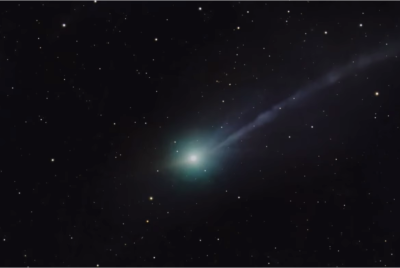NASA Releases New 3I/Atlas Images - It's Coming From Mars to Earth
NASA's new 3I/ATLAS images reveal what the interstellar comet looked like near Mars

The space community is buzzing after NASA released fresh, close-up images of the rare and wildly viral interstellar comet 3I/ATLAS, giving us an unprecedented look at an object that originated far beyond our solar system. These visuals offer an unprecedented glimpse into the structure, behaviour and journey of a comet formed in another star system, revealing ancient materials that predate our Sun.
What the New 3I/Atlas Images Reveal — And the Mars Connection
The newly released images focus on 3I/ATLAS's dusty halo, known as its coma, and the trails of gas and dust streaming from its icy nucleus. According to reports, scientists used a combination of NASA spacecraft — including Mars-orbiting probes — and space telescopes such as the Hubble Space Telescope and the James Webb Space Telescope (JWST) to observe the comet from multiple angles as it passed through the inner solar system.

One of the most compelling moments came in October 2025, when 3I/ATLAS made a relatively close pass by Mars. According to NASA, the comet came within about 19 million miles (30 million kilometres) of the red planet, allowing orbiting spacecraft to collect valuable data.

Around the same time, NASA's Lucy spacecraft, en route to study Jupiter's Trojan asteroids, was able to image the comet's coma and tail.

Earlier Hubble images, taken when 3I/ATLAS was still well beyond Mars, show a teardrop shaped cocoon of dust surrounding the nucleus. Furthermore, these structures, especially the asymmetric shape of the coma show that the comet is actively shedding material as it warms up in the inner solar system. Spectroscopic studies, including observations from the JWST, detected significant amounts of carbon dioxide, water, carbon monoxide, and cyanide. These materials help scientists piece together what this interstellar visitor is made of.
What makes 3I/ATLAS especially exciting is that it is not gravitationally bound to the Sun. It follows a hyperbolic trajectory, meaning it is just passing through our solar system. Researchers see 3I/ATLAS as a rare messenger from another star system, one that could carry clues about how comets form elsewhere in the galaxy.
When Will 3I/ATLAS Be Nearest to Earth — And Is It a Threat?
One of the most common questions is how close 3I/ATLAS will come to Earth. According to NASA, the comet's closest approach to our planet will be in mid-December 2025, when it will pass at a distance of about 167 million miles (269 million kilometres). That distance is roughly 1.8 astronomical units (AU), which is almost twice the average distance between the Earth and the Sun.
That means 3I/ATLAS poses no threat to Earth. Multiple reports confirm that there is no danger of the comet impacting our planet. Even at its closest, it remains far away in astronomical terms.
Rather than a risk, this close pass is a rare scientific opportunity. NASA and other space agencies are continuing close observations, using both ground-based and space telescopes to track the comet's behaviour and composition as it speeds through. After its December flyby, 3I/ATLAS is expected to head back into interstellar space, never to return.
© Copyright IBTimes 2025. All rights reserved.




















